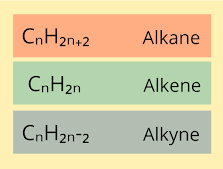Isomerism in organic compounds (Part-I)
Carbon is a very unique atom. It has the ability to form four bonds and can form bonds with so many elements in the periodic table. This property of carbon along with its catenation has led to the formation of a separate branch of chemistry, Organic chemistry.
The versatility of carbon atom leads to variation in arrangement.
Before we learn about the concept of isomerism there are a few terms that need to be understood.
Molecular Formula
Molecular formula gives the information on the type and number of atoms in that particular molecule.
So, the molecular formula- C2H4 consists of two atoms of carbon and four atoms of hydrogen.
Composition
The word is self explanatory, it is to do with what the molecule contains. Basically, the information is obtained from its molecular formula.
Constitution
This is given by the IUPAC name of the particular compound. The constitution describes the connectivity between the different atoms. Also, it gives us the information on the number and location of double and triple bonds.
Sterochemistry
Stereochemistry is the study of the spatial arrangement of different atoms in a molecule. It is an important concept in isomerism. Not only that, the stereochemistry of a molecule affects the reaction as well. Different products are formed due to change in the stereochemistry of the reactants.
The next two terms are to do with the stereochemistry of a molecule
Configuration
This is a permanent characteristic of stereochemistry, which can be changed only on the breakage of bonds.
Conformation
This is temporary. The stereochemistry of the molecule can be changed by rotation of the bond.
Isomers are molecules that possess the same molecular formula but there is a difference in the arrangement of atoms in space. For example, the molecular formula C4H10. The following are the possible structures of the molecule,
Notice both molecules have the same number of atoms, i.e., the same molecular formula but they differ in the arrangement of atoms, so, they have a different IUPAC name.




Comments
Post a Comment